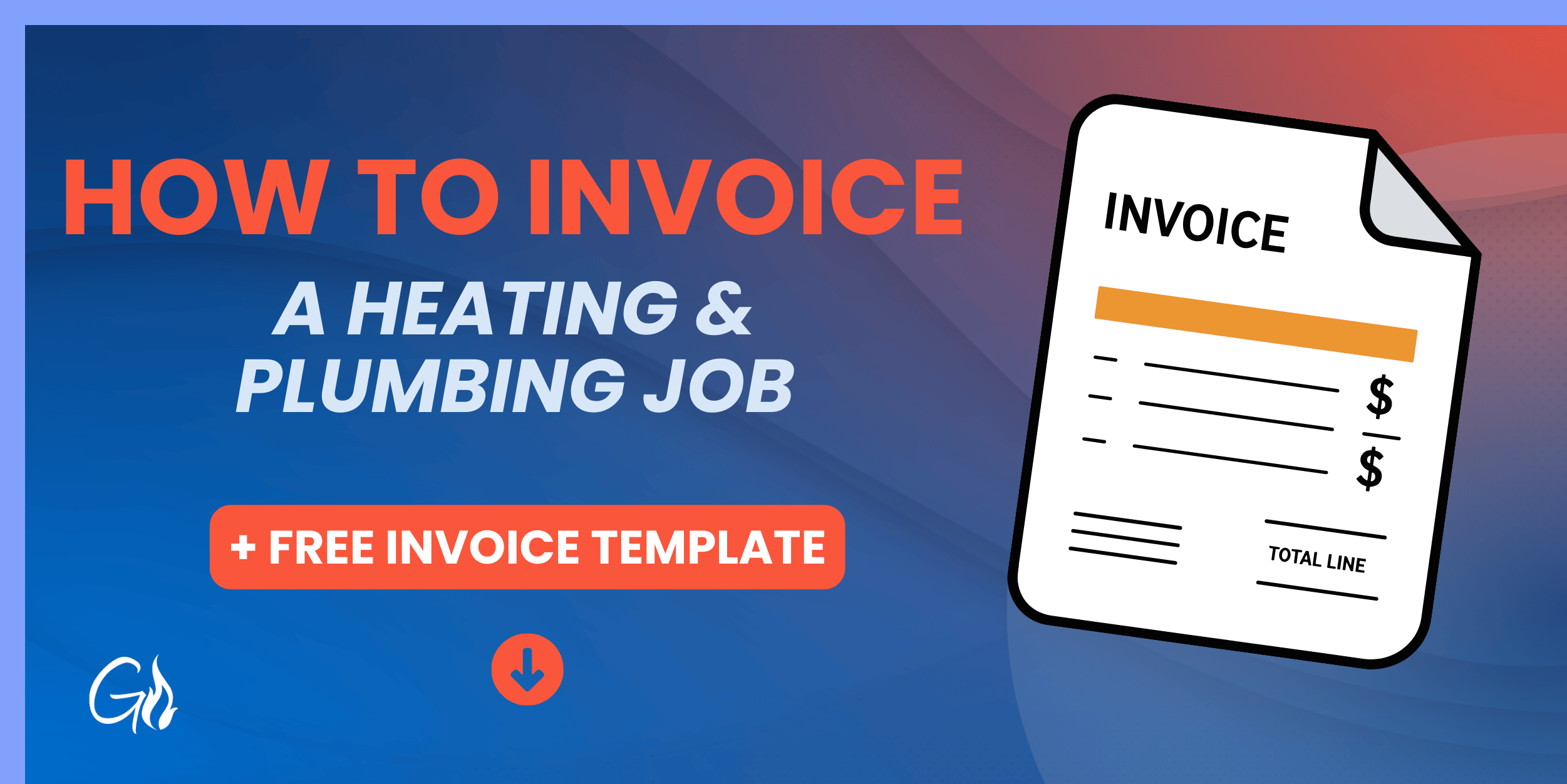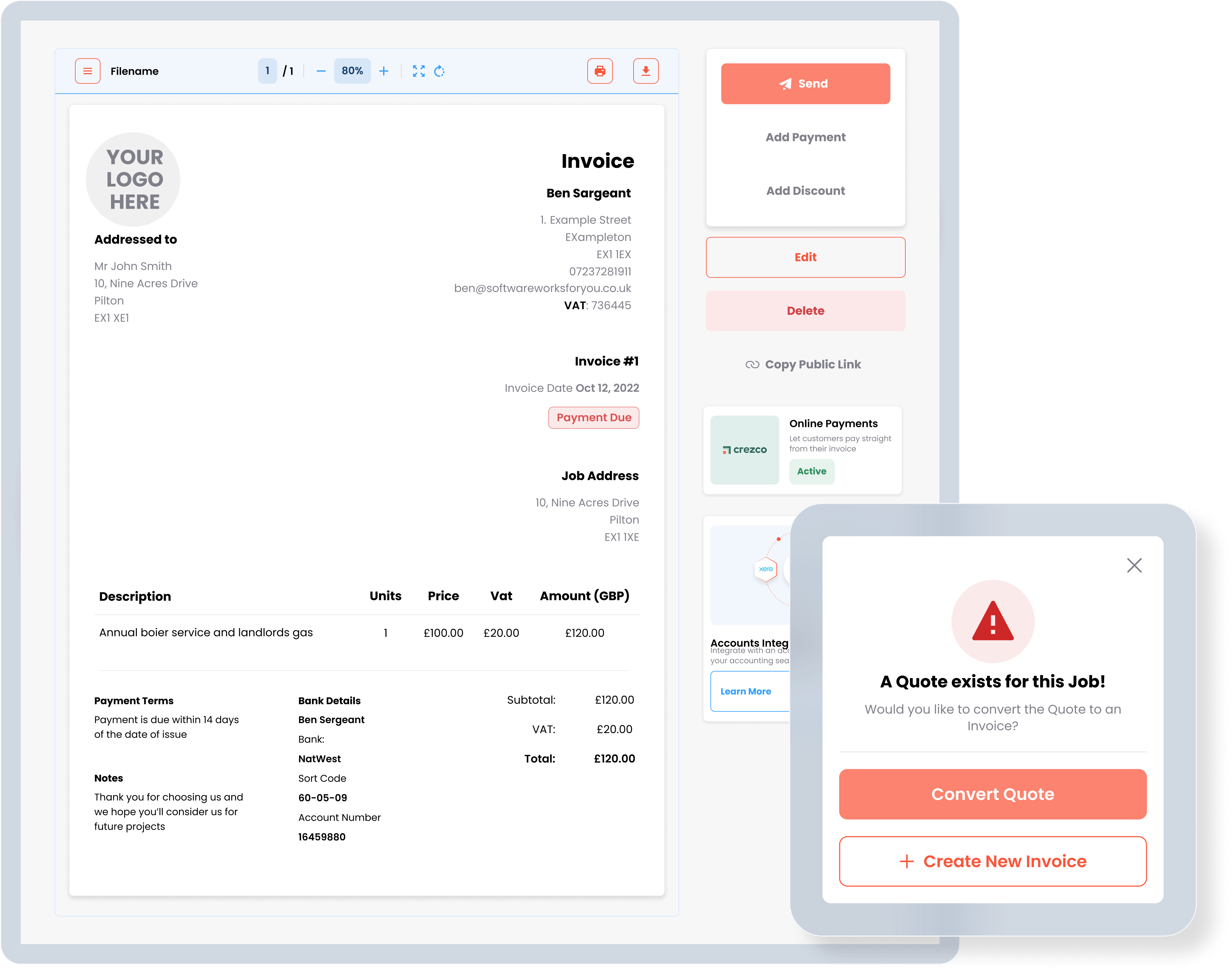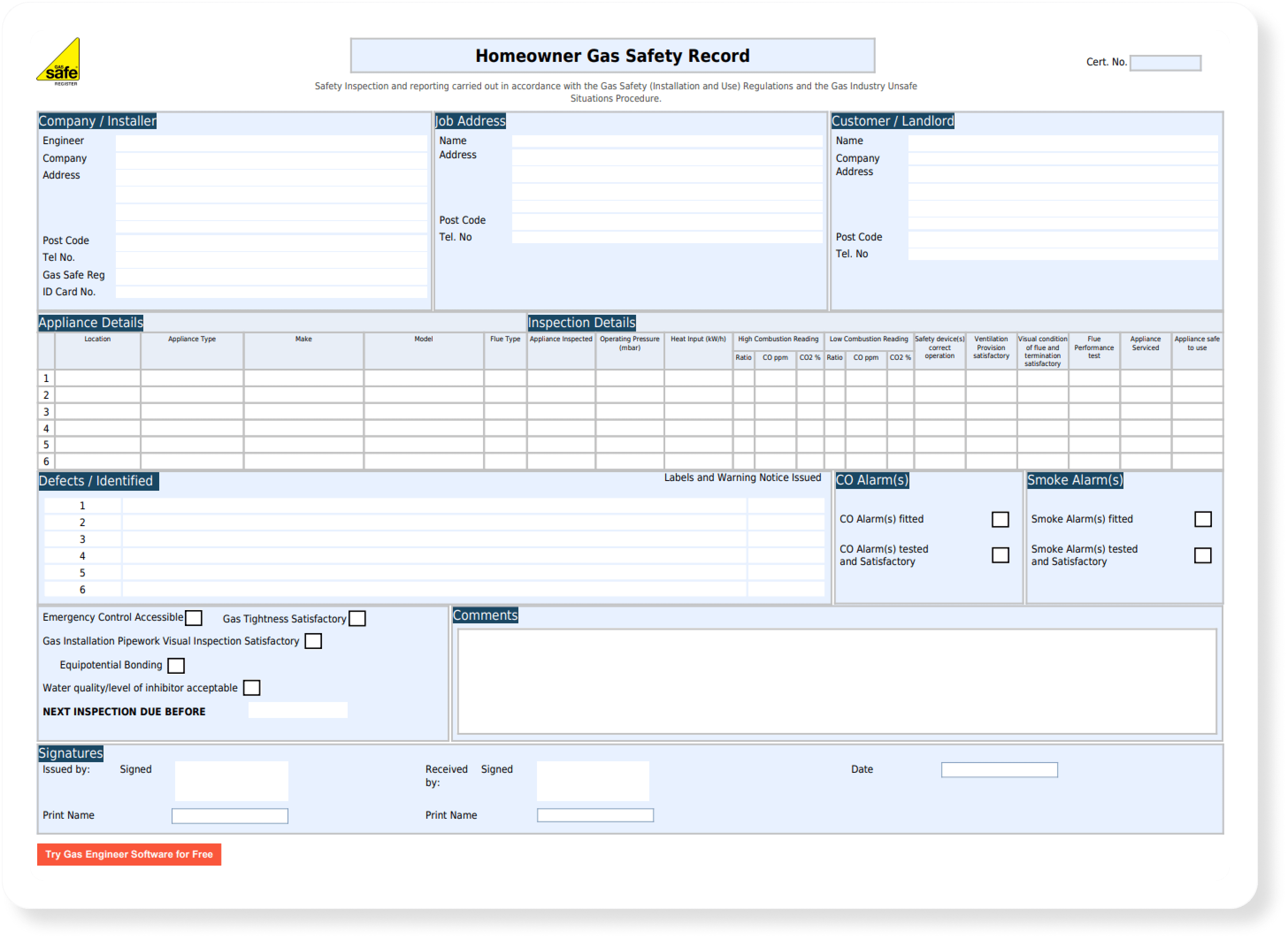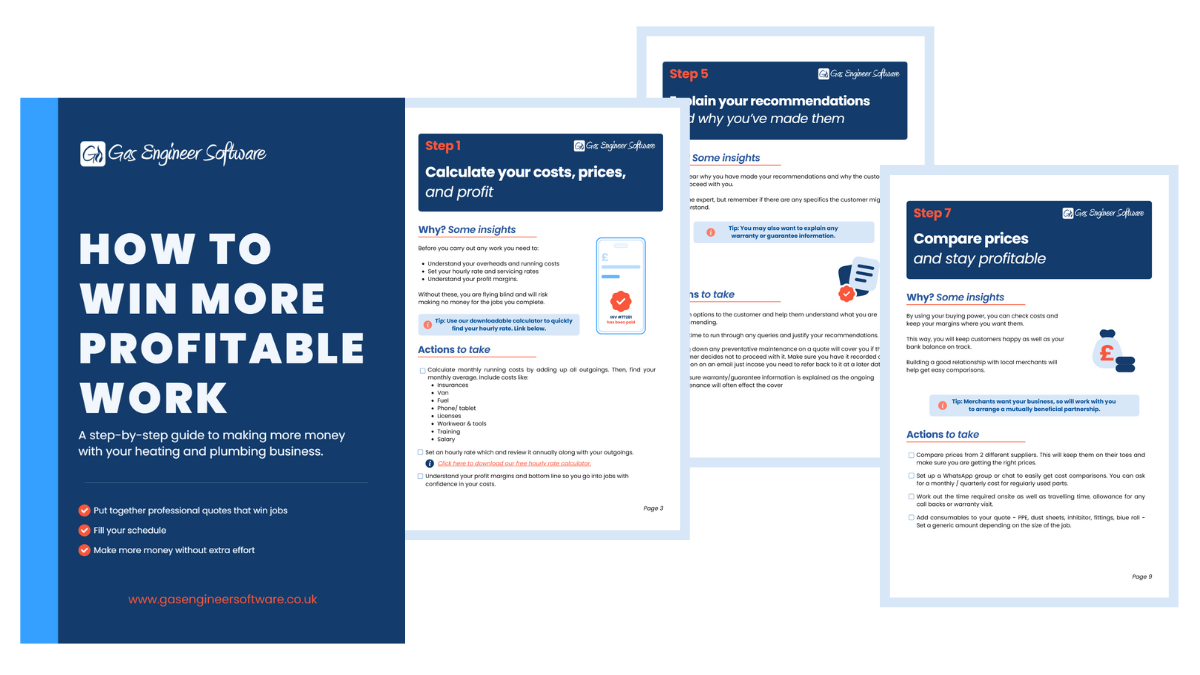How to Invoice a Heating & Plumbing Job

As nice as it would be, jobs aren’t finished when you complete the work. Sending, tracking, and managing invoices is a big part of the job—particularly for sole traders doing everything themselves.
In this article, we’ll break down what makes a great invoice and show you how to create one that gets you paid quickly and painlessly.
The benefits of a good invoice
- Improves Cash Flow: Clear and timely invoices help you get paid faster
- Builds Customer Trust: Reduces disputes with clear, professional, and transparent invoices.
- Saves Administrative Time: Rather than having to chase unpaid invoices and follow up on customers, you can spend your time where it matters most.
- Ensures Legal Compliance: A messy and disorganised invoicing process makes filling out your tax return a hassle.
What your invoice needs to include
Sending your customer a professional and accurate invoice not only presents your business in a positive manner, but it helps you avoid unnecessary back-and-forth with customers.

Here’s what to include on your invoice:
Your Business & Contact Information
This must be clear and easy to find. It should include:
- Your business name.
- Your business address.
- A contact phone number and email address.
- Your VAT number, if you are VAT registered. This is a legal requirement.
Your Customer’s Details
Include the full name of your customer and the address where the work was completed. This ensures there is no confusion about who is being billed for the work.
A Unique Invoice Number
A unique, sequential number (e.g., INV-001, INV-002) is essential for your own bookkeeping. It makes tracking payments, chasing overdue accounts, and filing your tax returns significantly easier. HMRC also requires unique invoice numbers for proper record-keeping.
Tip: If you’re thinking about creating your invoices digitally, you can edit your invoice numbers and prefix in Gas Engineer Software to pick up where you left off and keep your books organised.
Key Dates
Invoices without a date signal to your customer that you’re in no rush for payment. Always include two key dates:
- Date of Issue: The date you created and sent the invoice.
- Payment Due Date: The deadline by which you expect to be paid.
An Itemised Breakdown of Work
This is where many disputes begin. A single line item like “Boiler fix” is a recipe for questions and payment delays. Transparency is key. Break it down into clear line items such as:
- Labour: Be specific. Instead of just a total, list the number of hours and your hourly rate (e.g., 3 hours @ £60/hour).
- Parts and Materials: List every single part you supplied, along with its cost. Use clear descriptions (e.g., Vaillant Diverter Valve Part No. 12345 instead of just valve). This builds trust and gives the customer confidence in what they’re paying for.
The Final Costs
The financial summary needs to be mathematically perfect and easy to understand.
- Subtotal: The total cost of labour and parts before VAT.
- VAT: If you’re VAT registered, you must clearly show the VAT rate and the amount of VAT being charged.
- Total Due: The final, bold figure the customer needs to pay.
If you do your invoices with software, you don’t even have to think about this part.
Clear Payment Terms
Don’t leave your customer guessing how long they have to pay. State your terms clearly. Common examples include:
- Due upon receipt: Payment is expected immediately on receiving the invoice.
- Net 14 / Net 30: Payment is due within 14 or 30 days of the invoice issue date.
For new domestic customers, “Due upon receipt” is often the best policy to maintain healthy cash flow.
How to Pay
Make it as easy as possible for your customers to pay you. Clearly list the available methods:
- BACS Transfer: Provide your business bank account name, sort code, and account number.
- Online Payment: Note if you accept card payments via a payment link.
- Cheque: State the full name the cheque should be made payable to.
Your Credentials
Your invoice is another opportunity to showcase your professionalism. Including your Gas Safe Register number is a must. It instantly reminds the customer that they hired a qualified, legal professional, reinforcing the quality and value of your work.
Make your invoice look professional
If your invoice has all of the above, it’s a good invoice. However, that doesn’t mean you can’t take it one step further.
You can make your invoices look extra professional with the following:
- A clean design with your branding and logo.
- Several different payment options, for your customer’s convenience.
- Quick spell check for spelling mistakes.
- Avoiding industry jargon your customers might not understand (where possible).
Common invoicing mistakes to avoid
Few businesses have a perfect invoicing process. Here are some mistakes to avoid when issuing invoices for your heating and plumbing jobs:
1. Using Vague or Unclear Descriptions
This is perhaps the single biggest cause of payment delays. When a customer doesn’t understand what they’re paying for, they will hesitate to pay. Always aim for complete transparency.
- Vague: Boiler Repair – £350
- Clear: Supply and fit new fan assembly for Vaillant ecoTEC Pro 28 (Part No. 0020020015) + Labour (2.5 hours) – £350
The vague version invites questions and doubt. The clear version answers questions before they are asked, justifies the cost, and demonstrates your professionalism, leaving no room for dispute.
2. Surprising Customers with Hidden Costs
Trust is the foundation of your business. Your invoice should never surprise your customer with a significantly higher than the agreed-upon quote. If a job requires unexpected parts or additional labour, communicate this to the customer beforehand and get their approval.
3. Sending the Invoice Too Late
The best time to send your invoice is the moment you’ve finished the job and it’s fresh on your customer’s mind. If you wait until the end of the week, or even month, your invoice quickly loses its urgency.
If you don’t have an admin team or assistant, try sending it from your van before you head to your next job.
Creating an invoice doesn’t have to be a lengthy process. With Gas Engineer Software, you can convert quotes to invoices in just a few taps on your mobile phone.
4. Making Manual Maths Errors
When you’re creating invoices manually after a long day, it’s easy for mistakes to slip in. Adding up multiple parts, labour costs, and especially calculating VAT correctly and so on are simple but prone to careless mistakes—we’ve all been there.
Either you’re undercharging or overcharging, both are equally bad for your business.
5. Having No Follow-Up System
Sending an invoice and simply hoping it gets paid is not a viable business strategy. People are busy, and invoices can be genuinely forgotten. Without a system to track what’s outstanding and when to follow up, you can quickly find yourself with a serious cash flow problem.
A polite, timely reminder is a normal part of business and is often all that’s needed to get an overdue bill paid.
Streamline your invoicing process with Gas Engineer Software
The entire process—creating an invoice, sending it to your customer, and getting paid—is condensed into a few minutes with our app.
If you’ve created a quote, it can be converted directly into an invoice and then issued on the spot. Then, when you’re doing your accounts, our web portal makes it easy to track and add payments, reconcile invoices, and keep everything organised.
Over 6,000 heating and plumbing businesses in the UK use our software to manage their jobs. Get started today with a free 7-day trial (no card details required).


